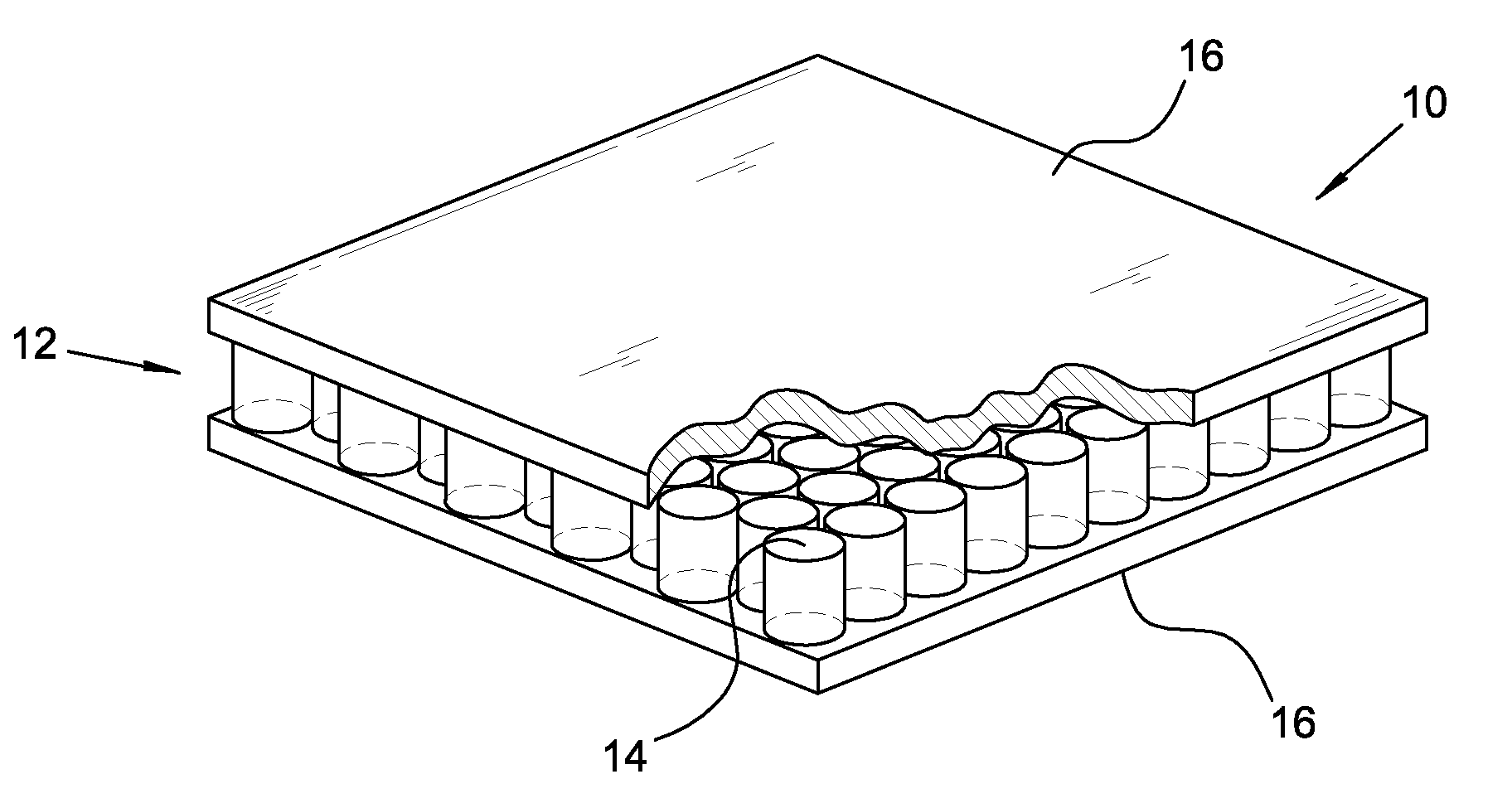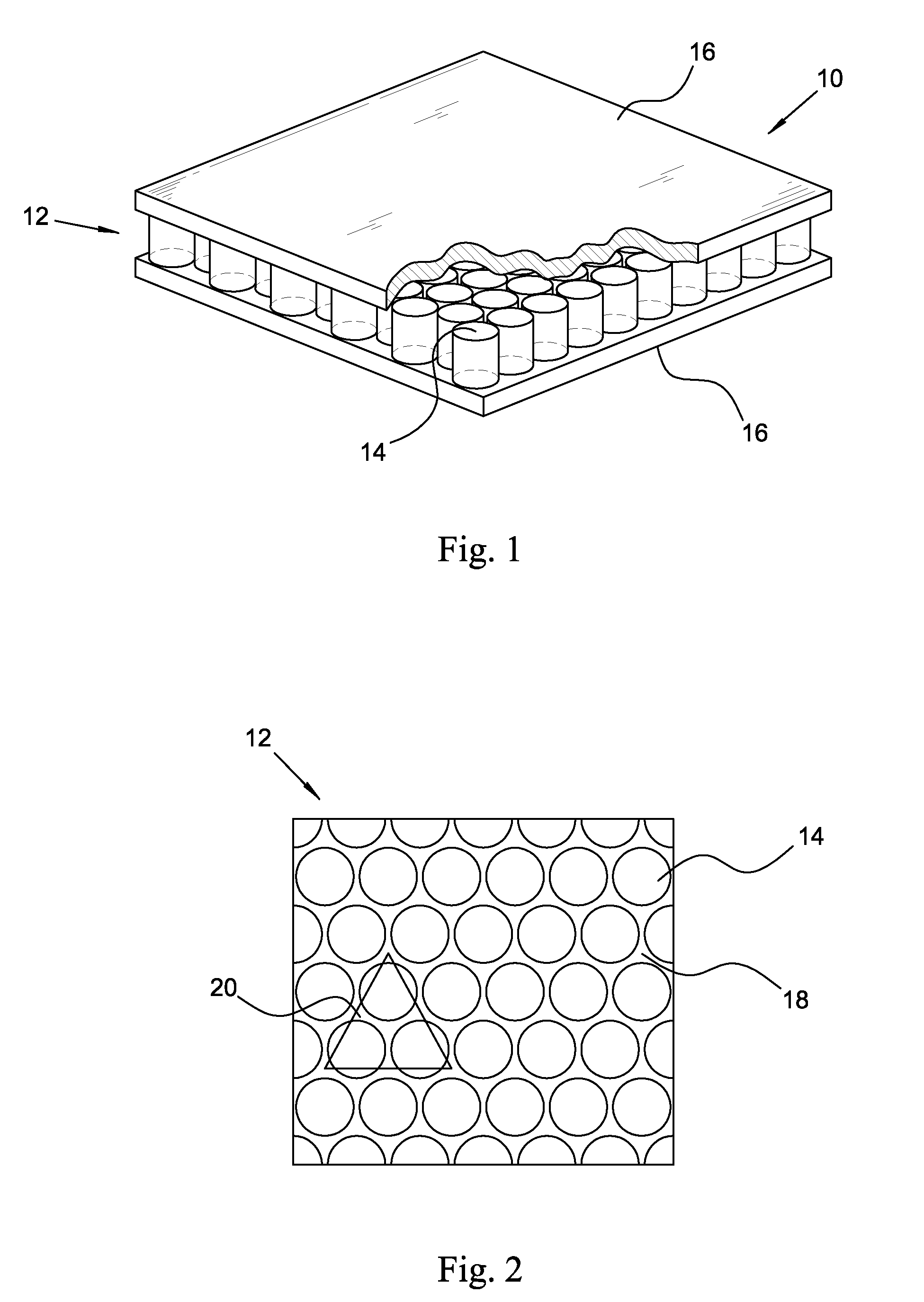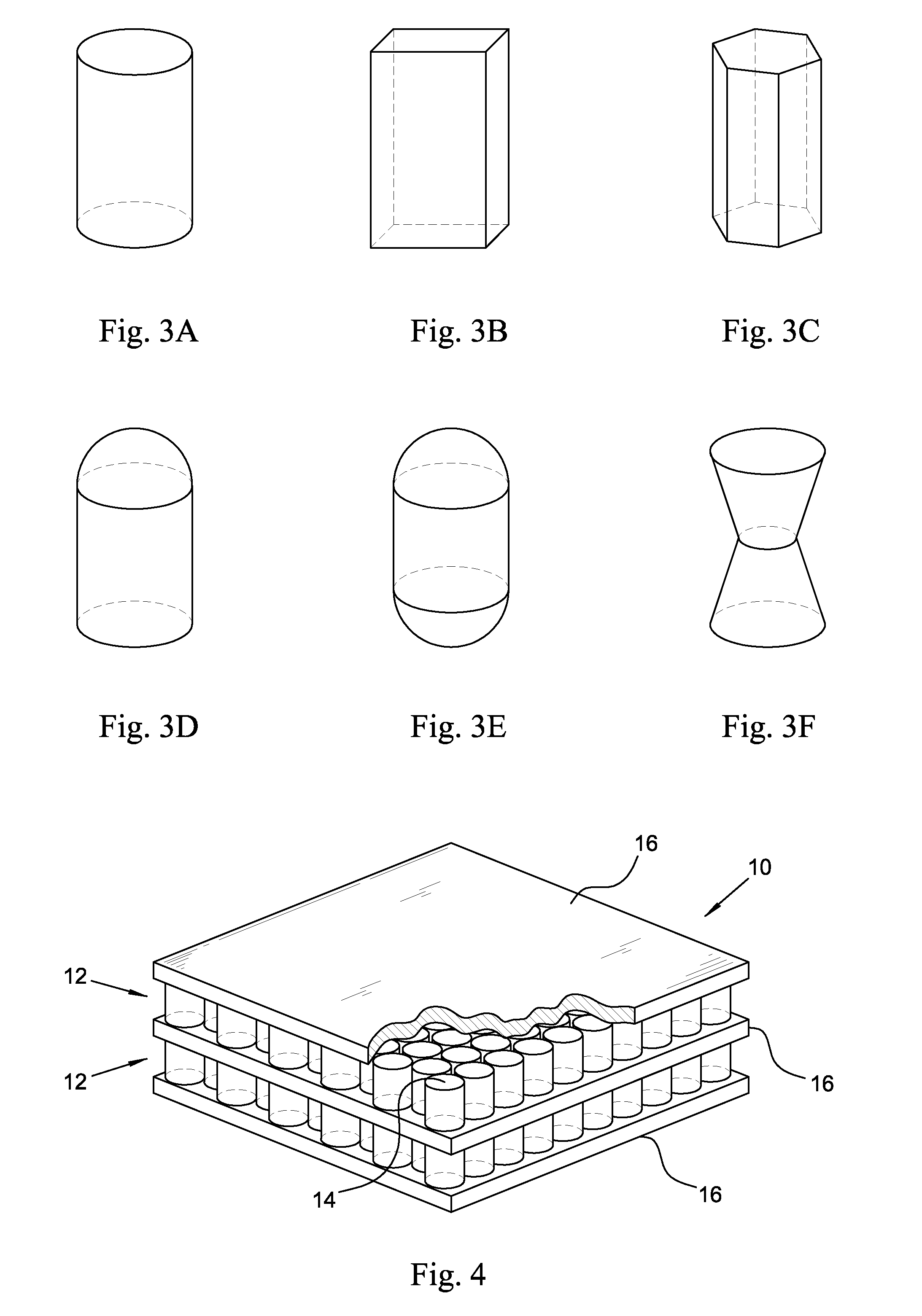Ballistic Protective Radome
a technology of radome and ballistic shield, which is applied in the direction of antennae, disturbance protection, armour plates, etc., can solve the problems of high steel structure density, excessive weight, and poor protection effect of radome, and achieves the effect of reducing the number of radomes
- Summary
- Abstract
- Description
- Claims
- Application Information
AI Technical Summary
Benefits of technology
Problems solved by technology
Method used
Image
Examples
example 1
[0040]Two different exemplary radomes implementing a single layer member configuration are built in accordance with two preferred embodiments of the present invention. One of these radomes implements the single main protective layer as is described in FIG. 1 and the other radome implementing a double main protective layer as is described in FIG. 4. The height of the layer members obeys the aforementioned resonant condition h=λg / 2 for a specific resonance frequency. The constraints to the radome design dictated by the resonant effect of the continuous gap may be better explained by reference to FIG. 6. It shows typical plots of transmittance versus normalized operational frequency, measured in resonance frequency units, obtained for both radomes. The plot indicated by 30 represents the single layer configuration whereas the double layer configuration is represented by the plot indicated by 32. Both curves are normalized to have the same transmittance value at the resonance frequency....
example 2
[0041]Exemplary PLMC radomes employing one sided caped cylindrical layer members as is shown in FIG. 5E, to which reference is again made, are built in accordance with a preferred embodiment of the present invention. The height of the layer members is h=0.18 λg, and the radius of the layer members is 0.127 λg. Tuning the operational frequency of such radomes is accomplished by changing either the width of the gap between the layer members of a pair and or by changing the dimensions of the disc. In this specific example, the height of the disc equals the width of the gap such that the disc is in contact with both pair members and the radius of the metal disc is 0.104 λg. A tuning capability of about 20% of the resonance frequency of the radome is demonstrated by reference to FIG. 7. Plots of the transmittance of various radomes versus normalized frequency measured in resonance frequency units are shown. These radomes vary with respect to the size of the respective gaps existing betwe...
PUM
| Property | Measurement | Unit |
|---|---|---|
| width | aaaaa | aaaaa |
| wavelength | aaaaa | aaaaa |
| dielectric | aaaaa | aaaaa |
Abstract
Description
Claims
Application Information
 Login to View More
Login to View More - R&D
- Intellectual Property
- Life Sciences
- Materials
- Tech Scout
- Unparalleled Data Quality
- Higher Quality Content
- 60% Fewer Hallucinations
Browse by: Latest US Patents, China's latest patents, Technical Efficacy Thesaurus, Application Domain, Technology Topic, Popular Technical Reports.
© 2025 PatSnap. All rights reserved.Legal|Privacy policy|Modern Slavery Act Transparency Statement|Sitemap|About US| Contact US: help@patsnap.com



